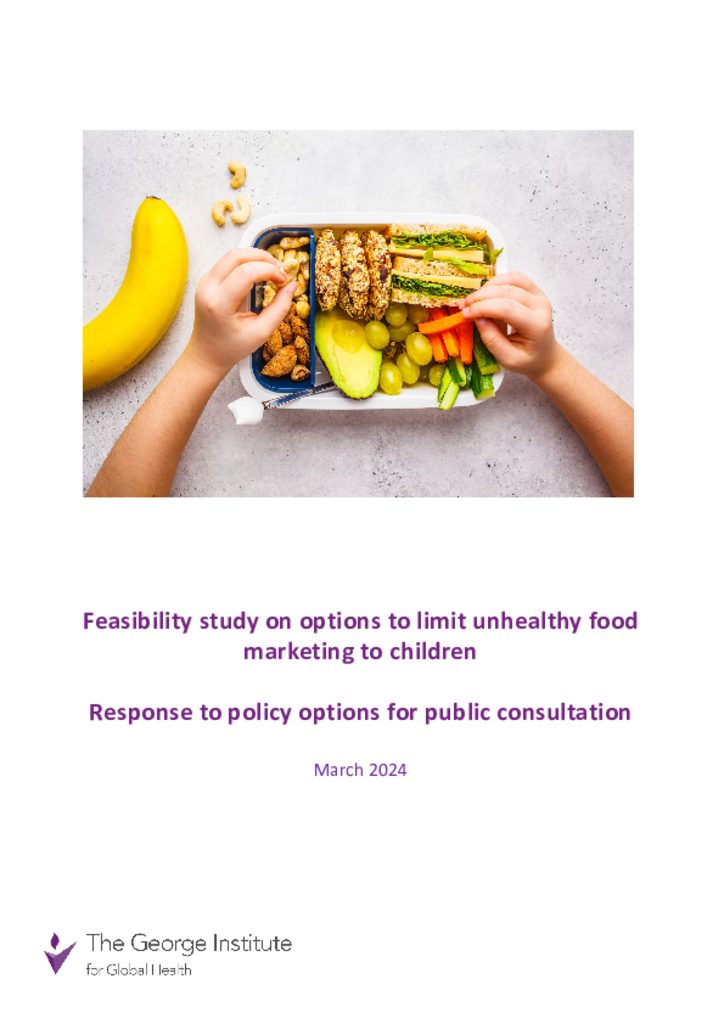
Feasibility study on options to limit unhealthy food marketing to children
The George Institute for Global Health welcomes the Australian Government conducting a feasibility study on options to restrict unhealthy food marketing to children. The consultation paper, prepared by the University of Wollongong and Deakin University, presents a compelling statement of the problem of unhealthy food marketing in Australia, and the need for Government regulation to curb its impact.
The impetus for action is clear. To have a significant and long-lasting impact, the policy design must be comprehensive and detailed, and fit within a broader suite of initiatives to strengthen regulation on unhealthy foods in Australia.
The development of a feasibility study on restricting unhealthy food marketing to children is welcome progress. The George Institute recommends that the Australian Government institute the following when introducing any new policy on regulation of marketing to children.
Recommendations
- New policy should be mandatory, managed by Government, and protect all children under 18
- Industry self-regulation, through voluntary codes of practice, has not reduced marketing of unhealthy foods, or reduce children’s exposure to them. Countries that have implemented mandatory government regulation have seen a decrease in sales of unhealthy foods, while countries that have relied on industry self-regulation have seen an increase.
- Other voluntary targets developed by the food industry have been ineffective in changing the healthiness of packaged foods, further demonstrating the need for government regulation in the food market.
- Unhealthy brands, not just products, should face marketing restrictions
- The practice of brand marketing is pervasive, and common in settings such as sports sponsorships.
- Brand marketing has been shown to increase children’s preference for unhealthy foods, even when the advertisement is for healthy food items. Not including brands in the scope of the policy risks an increase in this type of brand marketing.
- The policy should include all foods defined as unhealthy
- The George Institute suggests that further analysis is done that identifies the implications of each of the classification systems on the marketing of unhealthy foods. This could be done using the FoodSwitch database to compare the different classification systems.
- Analysis by The George Institute shows that each of the classification systems included in the feasibility study would continue to allow for the marketing of products to children that are defined as “unhealthy” in the discussion paper: foods high in fats, sodium, and sugars. Our preferred food classification system is the World Health Organization (WHO) Regional Office for the Western Pacific (WPRO) Nutrient Profiling Model. However, we suggest the COAG Interim Guide could be investigated as the foundation, with modifications to strengthen its comprehensiveness, clarity, and effectiveness.








